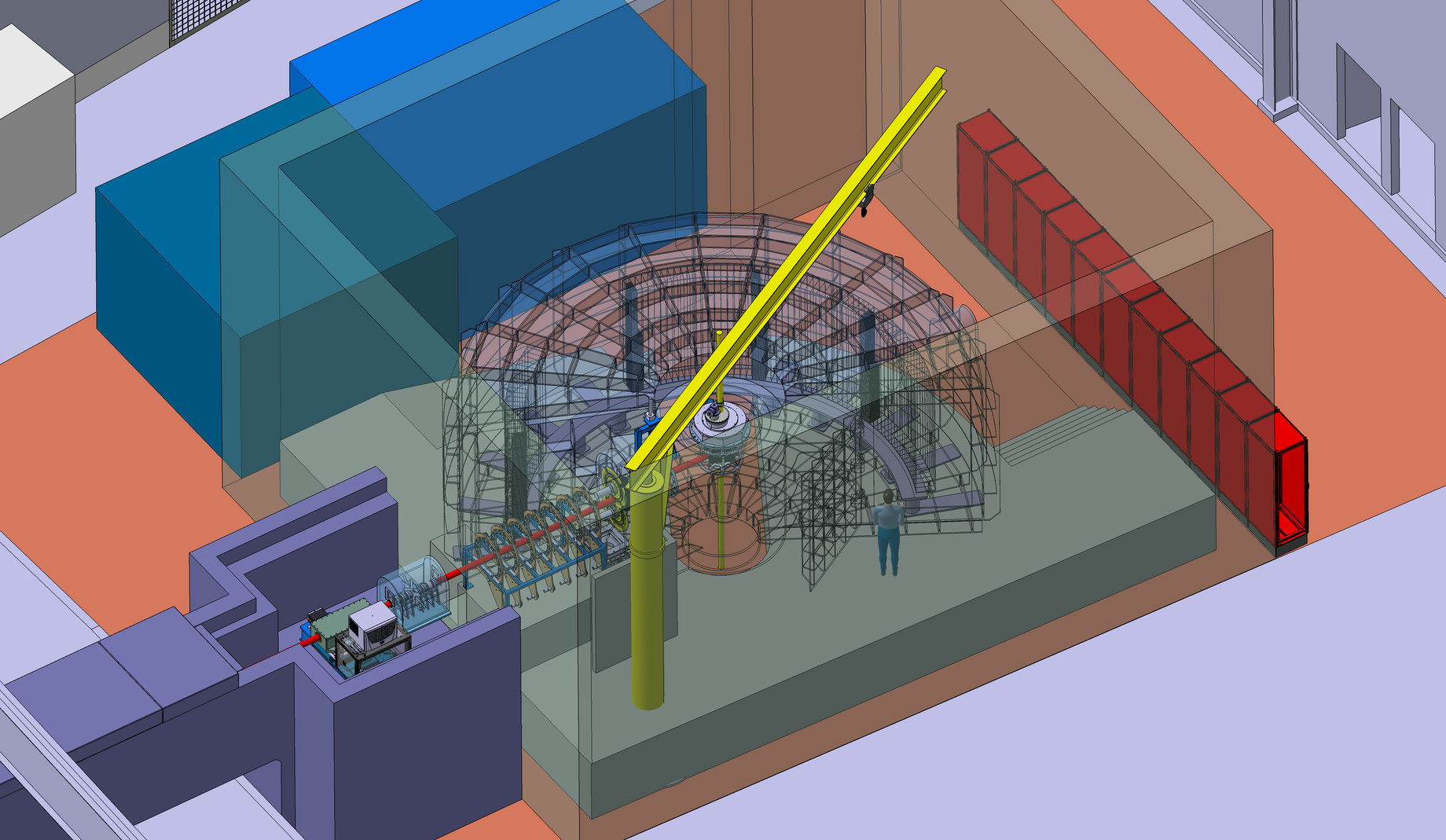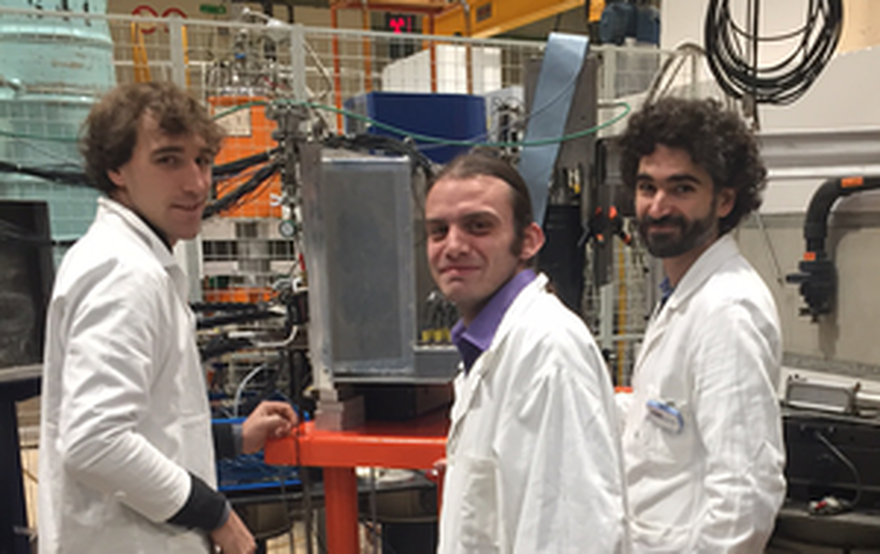
A team of researchers from the European Spallation Source (ESS) and Institut Laue-Langevin (ILL) have made improvements on the first-of-its-kind boron carbide-based large area Multi-Grid detector under development for ESS instruments CSPEC and T-REX.
Modifications to the construction and geometry of the MG_IN6 prototype detector have been tested on an instrument at ESS partner institute Laboratoire Léon Brillouin (LLB), near Paris. A significant improvement in detection efficiency was confirmed by the beamline tests. The story from ILL’s website is excerpted below, and here you can read the full story of the detector’s development:
December 2017: test of a new Multi-Grid detector by an ILL-ESS team at the LLB
In order to confirm the gain in detection efficiency provided by the new grid, an ILL-ESS team has tested the MG_IN6 prototype in December 2017 at the LLB on the G4.3 instrument. Two beam conditions were used: a narrow beam of 3 mm x 3mm, or a non collimated beam with a plexi attenuator to avoid signal saturation. The detection efficiency measured at 2.8 Å with the narrow beam centered in the middle of the cells was 51% with the standard grid, and 62% with the new one. This improvement comes only from the higher number of convertor layers in the new grid. An even more significant gain in detection efficiency is provided by the radial blades and the absence of dead zones; this is shown by comparing the counting rate measured in the 2 sectors with the beam of large section; at 2.8 Å the sector with the new grids counts 45% more than the sector with the standard grids.



























